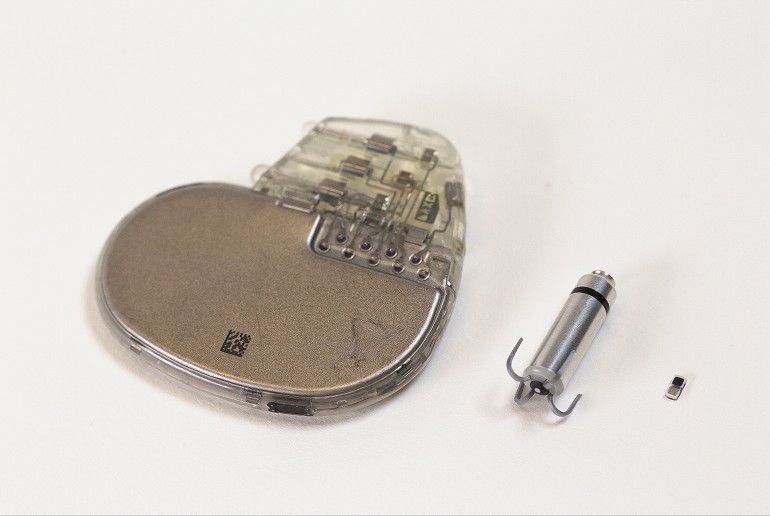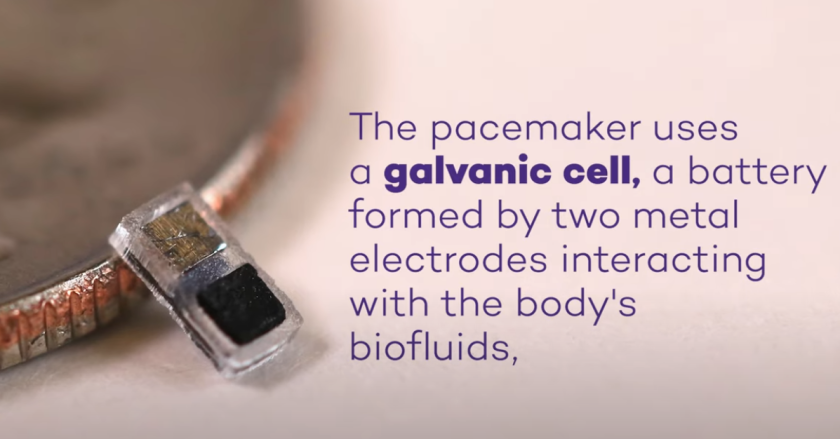
Northwestern engineers have come up with something pretty wild, a pacemaker so small it can fit inside the tip of a syringe. Not only that, but it’s wireless, dissolves inside the body after doing its job, and can be injected without surgery.
It’s meant for temporary use, especially after heart surgeries. One of the biggest reasons they built it was to help newborns with heart defects. After surgery, these babies sometimes need a little help keeping their hearts beating steadily for a few days. But even for a short time, the gear we have now can be bulky, invasive, and come with risks like wires sticking out of the chest, potential infections, all that. This new device skips all of that.
A Grain of Rice Sized Pacemaker
So here’s what it is: a tiny pacemaker, smaller than a grain of rice, about 1.8mm wide, 3.5mm long, and 1mm thick. It gets paired with a soft, flexible wearable that sits on the chest. When that wearable notices something off in the heartbeat, it flashes a little pulse of infrared light. That light reaches the pacemaker inside the chest, even through skin and muscle, and turns it on. The pacemaker then gives the heart a nudge to keep it on rhythm.
What’s especially clever is how it’s powered. Instead of a battery you’d have to replace or remove, it uses a tiny galvanic cell. Basically, it takes advantage of the metals in the pacemaker and the body’s own fluids to make electricity. No wires, no recharging, no surgeries to take it out later. It just dissolves safely after about a week.

For those Who Needs Temporary Pacing
John A. Rogers, who’s known for his work in bioelectronics, led the project along with Igor Efimov, a cardiologist at Northwestern. Their team included other researchers like Yonggang Huang, Wei Ouyang, and Rishi Arora.
It’s not just for babies, either. Anyone who needs temporary pacing, let’s say, after a valve replacement or during recovery from cardiac surgery could potentially use it. And since it’s so small and doesn’t rely on wires, it could even be built into other heart devices in the future.
One of the cooler possibilities the team mentioned is using multiple pacemakers in different parts of the heart, all controlled with different colors of light. That could help with more precise pacing or even stop arrhythmias in a more targeted way. Arrhythmias are basically problems with the rhythm or rate of your heartbeat.

Takeaway
This isn’t just an idea, they’ve already tested it in both small and large animals and on donated human hearts. They’re building on earlier work from 2021, when the same team developed an earlier version of a dissolvable pacemaker.
The whole idea here is to reduce the trauma that comes with temporary pacing. No cutting open the chest. No wires hanging out. Just a tiny device that does its job and disappears when it’s no longer needed.
If this becomes widely available, especially in pediatric care, it could make a huge difference for families going through a stressful time. And if it ends up helping in other areas like bone healing or pain management it could have a bigger ripple effect down the line.
Source: Northwestern Now



